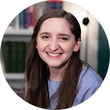- OT
- Professional support
- Optical organisations
- Specsavers at 100% Optical
Specsavers at 100% Optical
Specsavers’ Doug Perkins, Giles Edmonds and Paul Morris outline the challenges facing the profession and how data can be used to demonstrate its value
Delegates at 100% Optical (23-25 April) heard arguments for why optometry must continue to adapt in order to continue thriving as part of primary healthcare, and how data can be used to support its cause to the NHS.
Specsavers’ Paul Morris, director of professional advancement, and Giles Edmonds, clinical services director, delivered a presentation on Using clinical outcomes to improve quality and demonstrate the value of optometry during the optical trade show.
Morris introduced Specsavers’ Clinical Outcome Report, which provides eye care professionals with data about their practice, such as the types of recall in different age bands.
“The idea is to use this to reflect on, and form goals and CPD,” he suggested, adding that the data can be used to improve services and business efficiency.
“We’ve brought this data together to give clinicians the best possible reflections and indication of the impact they were having in their communities,” Morris said. “That’s a cornerstone of their development. That’s something, with mentorship and leadership, they can have to make sure they are the best possible clinicians they can be.”
Discussing the report at 100% Optical, the company emphasised its ambition to share the data more broadly within the profession.
“We are really clear that we want to share our data to make a positive impact and to help us build on the great work we did through COVID-19,” Morris said, “working together as a sector to help the population, help the NHS, and help those people on ophthalmology waiting lists by delivering more services within our practices.”
Specsavers’ clinical services director, Edmonds, who is also an optometrist and store partner, delivered an analysis of threats and challenges facing the sector, which considered the political, economic, social and technological (PEST) factors affecting the profession.
“We’ve got an unstable political situation, COVID-19 has had a huge impact on the health system in the UK, we’ve got the economic situation,” Edmonds summarised, pointing to inflation rates, which are anticipated to rise above 10%, as well as increasing fuel prices.
“I think we and our patients are going to have a really tough time in terms of the amount of money to spend,” he said.
Doug Perkins, Specsavers CEO, also sat down with OT to discuss the path ahead for the sector.
He particularly highlighted the threats posed by the number of “non-registrants, who are playing around with new technology with a defined aim of commoditising the full-scope services we provide,” adding, “at this time the public are very open to convenience and price, and that is a significant threat.”
However, Perkins emphasised that though threats exist, “the opportunities are massive” for optometry.
Reflecting on how optometry can continue to demonstrate its role in extended services and have a voice in commissioning, the Specsavers team highlighted the importance of measurable benefits and an evidence-base, Edmonds commented: “Data is important.”
PEST analysis
Illustrating the threats facing the profession, Edmonds highlighted the unsteady political landscape and the continuing economic and human costs of COVID-19, explaining: “The societal impacts of the pandemic are wide and run really deep, and that is going to go on for many, many years to come.”
Looking at the “catastrophic” effect of the pandemic on the wider health economy, Edmonds shared that over six million people in the UK are on waiting lists, with two million of those waiting over 18 weeks for their first treatment.
Meanwhile, Specsavers research indicated that more than 4.1 million people missed their routine sight tests during the pandemic.
The challenge going forwards, Edmonds said, is: “to make sure we maintain and evolve our nationally-commissioned NHS contract,” and then build on these foundations to increase the involvement of community optometry in areas such as glaucoma, cataracts, and the COVID-19 Urgent Eyecare Service.
Workforce pressures also represent an issue, Edmonds said, noting that the NHS had 90,000 vacancies at the time of the presentation, while the optometry sector struggles to recruit in particular areas of the country.
In a broader context, challenges in Ukraine and sanctions in Russia are driving up fuel and food prices, Edmonds said, while changes to the energy price cap and the end of fixed-term contracts also add to pressures.
“I think we can be extremely proud of what we have done as a profession during the pandemic. We have been there to deliver urgent and essential care for our patients,” Edmonds said. “But there are significant threats that lie ahead. Working together, we can shape and form the role we play as optometrists into a more integrated and extended role for our patients, looking after their eye and healthcare.”
100% Optical 2023 will be held at London’s ExCeL from 25-27 February.
Advertisement



Comments (0)
You must be logged in to join the discussion. Log in